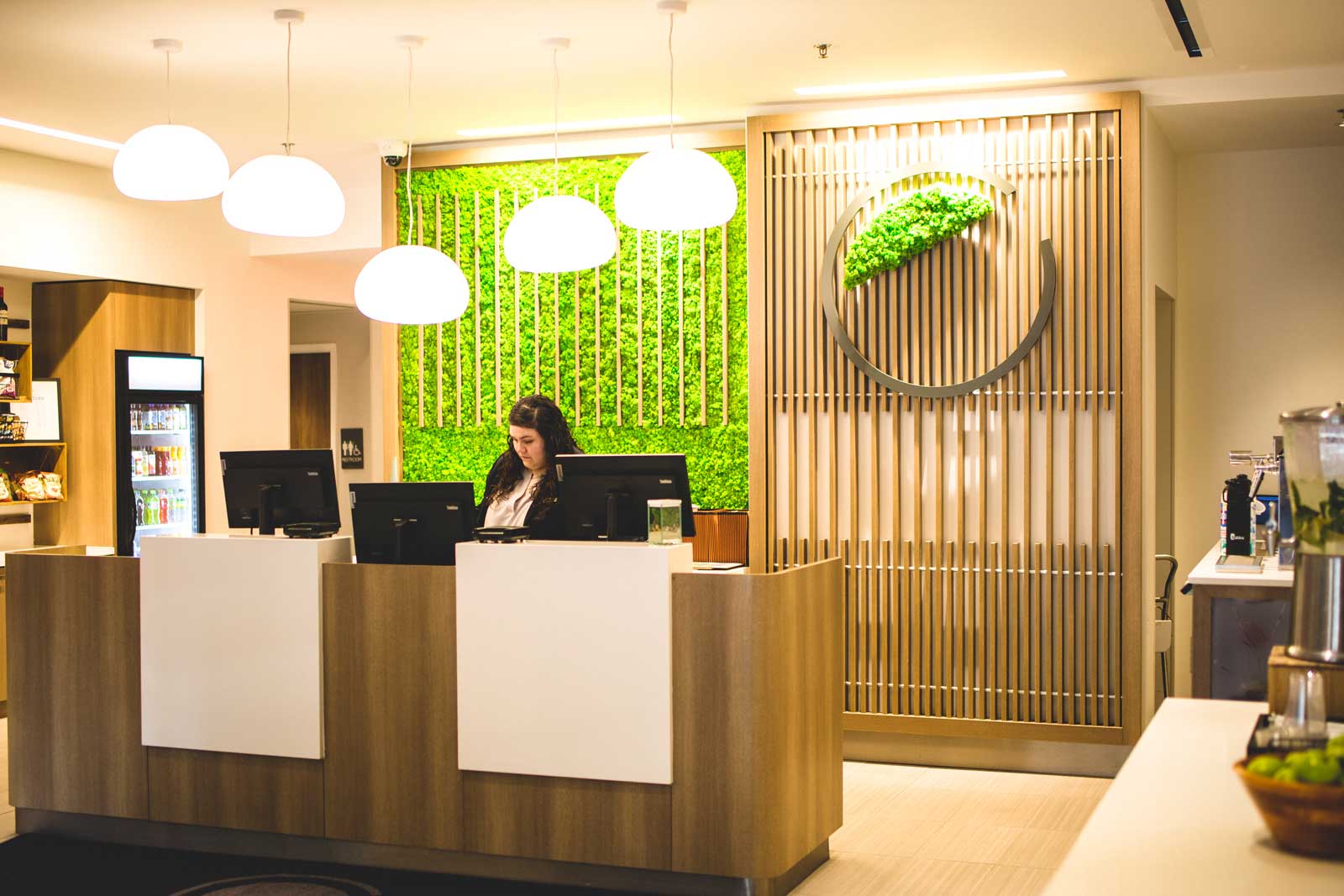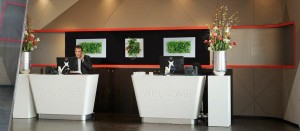Hotels' Guide: Implementing Wellbeing Design in Hotels
Leveraging our own experience, Natura has drawn up a roadmap for hotels and other industry stakeholders looking to meet the WELL certification standards. Here are some pointers on where to start and how to proceed if you want your hotel to be WELL certified.

We thrive on enhancing the spaces that people live and work in. This is why we work with clients to curate corporate and hospitality spaces that prioritize the health and wellness of building occupants.
This is why we support the WELL Building Standard, which aims to “advance human health through design interventions and operational protocols and policies”. Established by the International WELL Building Institute (IWBI), the WELL Building Standard provides a scientific basis for health and wellness in built environments.
After undergoing a stringent evaluation process, Natura has been recognized for the steps we’ve taken to positively impact the lives of people. We are a licensed WELL partner and can proudly display our “Works with WELL license”, which you see displayed alongside our plants.
The road to achieving WELL certification isn’t easy, but it’s also not impossible. If you’re a hotel or hospitality industry stakeholder that can make it through the WELL evaluation process, it bodes well for the future of your establishment
Being able to implement wellbeing design in hotels and comply with the WELL Building Standard signifies a hotel’s commitment to its guests. It gives hotels the competitive edge in an industry that’s becoming increasingly health- and eco-conscious and in an industry that values sustainability.
But how do you go about WELL Building compliance? And where do you begin? In the interest of more establishments embracing a people-first approach in their business, we’ve drafted a roadmap detailing how hotels can embark on their journey to a WELL certification.
- Get to Know the WELL Standards and Requirements
The WELL certification process operates on a ratings system designed to accommodate all project types and sectors. The system considers ten core concepts: :
- Air
- Water
- Nourishment
- Light
- Movement
- Thermal comfort
- Sound
- Materials
- Mind
- Community
Designed to grow over time, different iterations of the WELL Building Standard have been adapted to include developments in public health and wellness.
- Consider How WELL-Compliant Your Hotel Currently Is
Start implementing wellbeing design in your hotels by reviewing what your establishment’s current practices are across the ten core concepts of the WELL Building framework.
Consider the impact of aesthetics and biophilic design on your guests, for example. Spaces should, of course, be functional, but using aesthetic design elements – like specialized hotel plant design or greenwalls – will influence your guests’ overall perception of their stay.
As a licensed partner that can assist hoteliers in complying with the WELL Mind core concept, we at Natura consider whether your hotel’s corporate identity promotes wellbeing. In addition to our Works with WELL license, we have special insight into the Mind core competency and can offer guidance in terms of the optimizations and preconditions that inform the WELL Mind concept.
Consider how your space uses natural light to its advantage, and whether it incorporates the built environment’s large windows and strategically placed skylights into the hotel plant design. You can also manipulate light in an area using reflective surfaces in a sun-bathed space. This minimizes disruptive glare that can negatively impact your guests’ comfort.
- Embrace the Eco-Principles of Designing for Wellbeing
Have you listed all the design and operational changes that need to be implemented to meet WELL certification requirements? Then it’s time to get the whole team on board. Create a hotel culture that embraces the principles of eco-friendly design, such as:
- Educating your staff about the benefits of hotel plant design and find ways to highlight eco-friendly operations at work within your hotel
- Encouraging guests and hotel employees to connect with nature and enjoy the green spaces you’ve created in and around your built environment.
- Draft a Timeline for the WELL Certificate Process
The scope of work you need to put in to achieve WELL certification will always depend on the scale and complexity of your hotel. It also depends on the wellbeing compliance prior to assessment, which impacts on the project timeline.
With that said, plan for the integration project to last for several months to a year, and expect the process to be rigorous. Be thorough when planning the implementation and keep to your deadlines to ensure timely success. It’s also a good idea to collaborate with other industry stakeholders who can help you meet the ten core concepts of the WELL Building Standard.
As we’ve mentioned, Natura’s hospitality plant design services, can help you comply with the WELL Mind core concept.
- Implementing Wellbeing Design in Your Hotel
To start implementing the WELL-compliant changes your hotel needs to make, you’ll need to integrate WELL design throughout your hotel’s framework.
This means that you might have to re-evaluate your hotel’s architectural and interior design choices to align with WELL Building Standards. Consider, for example, whether the layout of your rooms and common areas (like the lobby and restaurant) are optimized with natural light and ventilation. Both these elements are necessary for biophilic design and plant integration.
Beyond design, you’ll also need to think about how, operationally, your establishment supports guests’ health and wellbeing. Do you provide healthy food options? Is there access to facilities – like a pool or gym – that encourages guests to be active? Do you have a company wellness program to support your employees’ health and wellness?
The California-based Inn at Moonlight Beach – the world’s first WELL-certified hotel – embraced the WELL nourishment concept.It used its surrounding lush farmland and productive vegetation to provide guests with healthier food.
In addition to Nourishment, the other “most obvious and tangible” elements of implementing wellbeing design and WELL standards at Inn at Moonlight Beach originated out of the Air and Water core concepts.
According to owner and general manager Shangwen Chiu Kennedy, guests notice that the hotel’s tap water is drinkable, and that its air filtration is “meticulous”. Kennedy adds, however, that the Mind concept was also pertinent to the hotel’s WELL transformation.
“People notice . . . our healthy organic breakfast basket, complete with nutritional labels. However, I think the most powerful aspect of the experience is in the Mind concept. Our health and wellness library, medicinal herbal tea collections in the lounge, meditation deck, various gardens throughout the property, and the visual design and biophilia elements of WELL, contribute to an awareness of health and wellbeing for guests that is impactful,” says Kennedy.
Biophilic hotel design and the integration of seasonal plant life into your interior design plan goes hand-in-hand with the comfort and wellbeing of your guests and staff. This is evident at The Inn at Moonlight Beach,
Hotel plants are not only functional, helping you optimize air quality, room temperature, humidity, and aesthetics They also promote a calm and tranquil atmosphere. This supports the makings of a people-focused establishment that prioritizes health and wellness.
What Does a WELL-Certified Hotel Look Like?
- Aligning your hotel with WELL standards means prioritizing the health and wellness of your guests and employees. If you’re actively creating an environment that supports the physical, mental, and emotional wellbeing of your guests and employees you’re already on your way to achieving the esteemed WELL certification.
WELL-certified hotels offer a holistic approach to guest experience. They take all aspects into consideration, including the quality of the air guests breathe, their access to healthy food options, the way the environment helps them relax, and so much more
Embarking on a journey towards WELL certification also means that you need to strongly consider the WELL Building Standards’ ten core concepts, Think about how your hotel fairs on the WELL rating system. Based on your rating, carefully planned, strategic collaboration and a commitment to sustainability will set you on the path towards achieving the coveted WELL certification.
This helps people-centered eco-conscious businesses set a new standard of excellence in the hospitality industry.




